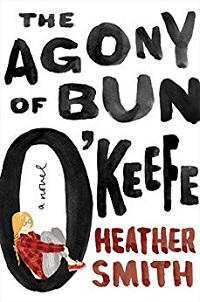| ________________
CM . . .
. Volume XXIII Number 34. . . .May 12, 2017
excerpt:
In 1986, Bun O’Keefe, 14, runs away from the home she shares with her morbidly obese, hoarder mother, and ends up in St. John, NB. There she befriends Busker Boy, a street musician who allows her to stay at the rooming house that he shares with Chef, a pot smoking dishwasher with culinary dreams; Chris/Cher, a medical school dropout and drag queen; Big Eyes, a Catholic school girl trying to escape an abusive past; and The Landlord, a pimp who Bun is told to avoid at all costs. The action is episodic, serving mostly to reveal the backstories of the main characters. Busker Boy, an Indigenous youth, came to the city to rescue his sister from a life of prostitution. Chris/Cher left medical school when his parents cut him off financially after learning he is gay. And Big Eyes ran away from an abusive uncle and a strict religious upbringing. Smith’s strength is her attention to setting details and character development. Bun is a curious character—simultaneously learned (having memorized many facts from television, videotapes, and an assortment of reference books) and naïve. Because she has spent most of her life trapped inside her house, her emotional intelligence is that of perhaps a five year old. Her interactions with others are awkward, abrupt, and frequently insulting. Still, she finds happiness with this unique family, at least until two deaths rock her world. Further complicating her emotional healing, she is molested by The Landlord. What’s less believable is the premise that a 14 year old living with unrelated young adults on the edge of society could go completely unnoticed by any authority. Additionally, the story introduces too many issues for any one novel to adequately tackle. Suicide, prostitution, mental illness, sexual abuse, gender identity issues, racial politics, and abandonment—any one or two these would have sufficed. Instead, readers are left with the burden of all of these problems and no real closure for any of them. Recommended. Kay Weisman works as a youth services librarian at West Vancouver Memorial Library and chairs the Children’s Literature Roundtables of Canada’s Information Book Award.
To comment
on this title or this review, send mail to cm@umanitoba.ca.
Copyright © the Manitoba Library Association. Reproduction for personal
use is permitted only if this copyright notice is maintained. Any
other reproduction is prohibited without permission.
Next Review | Table of Contents For This Issue - May 12, 2017 |
